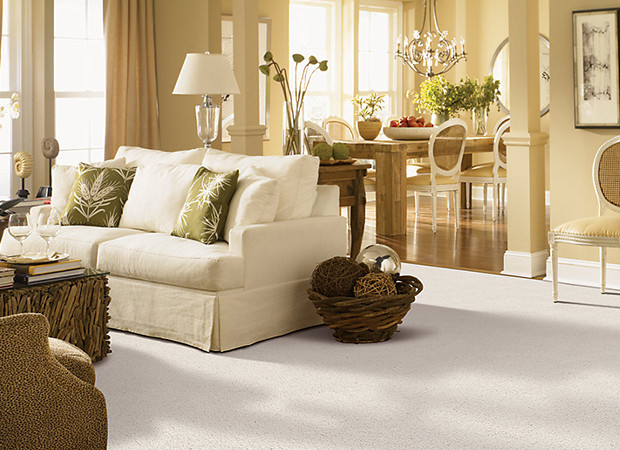Over the course of time, your carpet can loosen and become stretched. Carpets that become stretched out usually have a rippled or wavy appearance. Carpet stretching can become detrimental to your carpets longevity and quality. Also, when the carpet starts to ripple, it can cause people to trip over the loosened areas. You have 2 choices when dealing with carpet stretching, if your carpet is older and in the past was stretched before, it’s best to hire a professional carpet cleaning service. On the other hand, if you want to take the task on yourself and possibly save a little money, then learn how to stretch your carpet yourself.
What You Will Need
– Flathead Screwdriver
– Work gloves
– Set of New Tack strips
– Pry bar
– Hammer
– Tin Snips
– A Carpet Cutter
– A Power Stretcher
– A Knee Kicker
Steps
- Start where a tack strip is located, they are usually placed along the outer edges of the carpet. Pry the carpet up either using your hands or pliers, and gently pull away from the tack strip. Once, you get the carpet started it should pull so easily!
2. Remove any tacks and staples from the pad before lifting it from the floor.
3. Remember to wear work gloves when removing any of the tack strips! Remove the old tack strips by using a flathead screwdriver, or some sort of pry bar. Also, discard any of the old tack strips in a container to avoid any injuries.
4. Set up the new tack strips where you pulled the old ones up from (about ¼ inch from the wall). Also, use a pair of tin snips to cut them to the precise length. The gripping nails should be on top (which are the sharp nails that will hold the carpet in place) pointing towards the wall. Then, place a pry bar on top of the setting nails (which are the ones pointing down towards the floor) and hammer them to sink them into the floor.
5. The following tools are essential for carpet stretching, and are typically available to rent:
- A carpet cutter: Will make this task much, much, more easier for you.
- A power stretcher: Provides a good amount of muscle which uses prongs to latch onto the carpet on one end and a brace that fits against the opposite side.
- A knee kicker: Can help stretch carpet in smaller areas where a power stretcher can’t fit.
6. Next, reset the pad and trim it to the necessary length using the carpet cutters along the tack strips. Staple the pad to the floor, about every 3 inches next to the tack strips, all along the seams.
7. Gently lay the carpet back along on the ground using the power stretcher head (about 6 inches) from the carpet’s unanchored edge. Press the lever of the power stretcher to smooth out any wrinkles in the carpet. If the lever is requiring too much pressure to push down, then you are stretching the carpet too tight. Then vice versa, if it takes absolutely no effort to press down then the carpet is too loose.
8. After stretching the carpet the lengths of the room, remove the power stretcher.
9. Place the head of the knee kicker (about 6 inches from the wall), and using your leg to finish the stretch. Use the part of your leg above your knee cap.
10. Insert the stretched carpet edge into the tack strip with your hand, before you do any necessary trimming. Using the carpet cutter cut off any excess carpet, as the tool traps the carpet against the wall, or woodwork.
The process of carpet stretching might be too much of process for you to take on, and if so a professional carpet cleaner can get the job done!

Leave A Comment